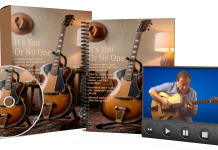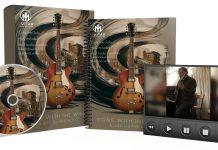This post may contain affiliate links. As an Amazon associate, Google associate as well as associate for other programs, Guitar & Music Institute may earn commissions from qualifying purchases.
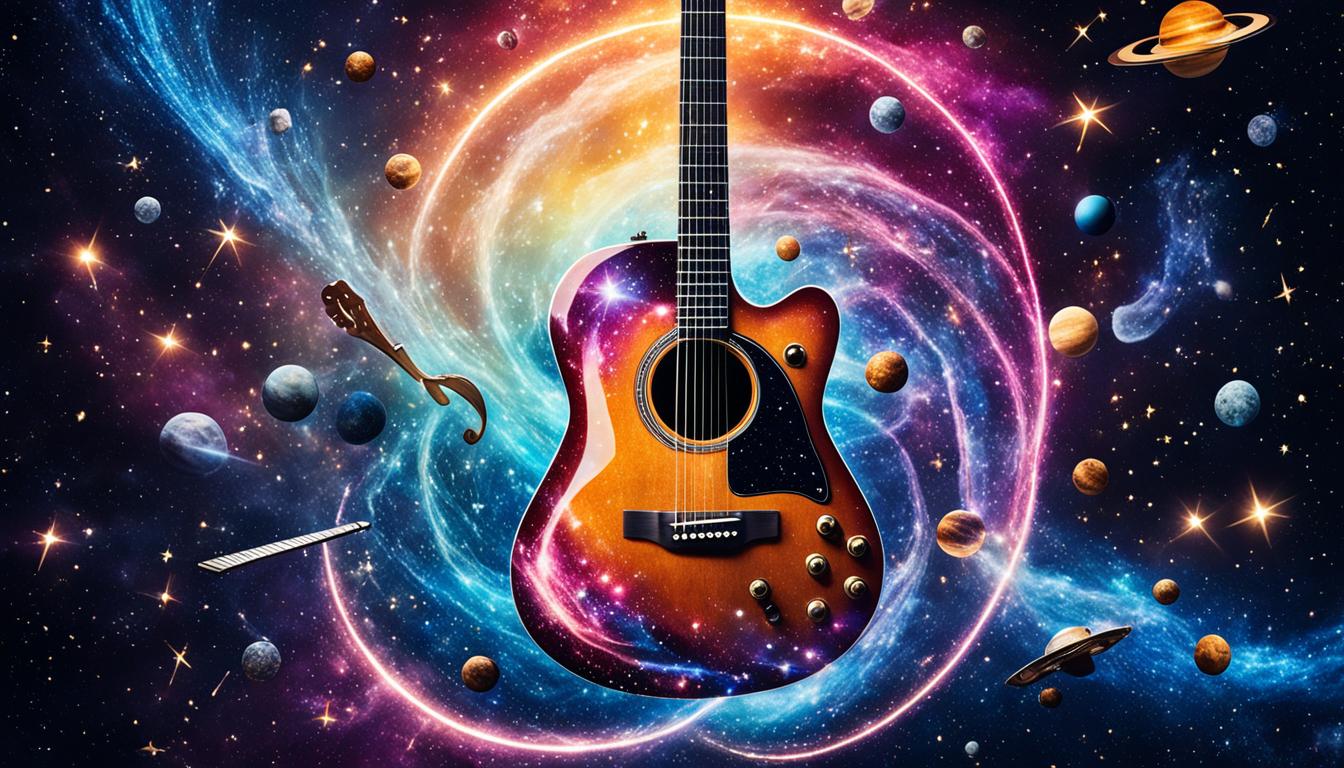
Welcome to our in-depth exploration of the fascinating history of the guitar (Amazon link to “Guitar Family Trees Book”). In this article, we will delve into the origins and evolution of this iconic instrument, tracing its journey through time. From ancient beginnings to modern innovations, the guitar has captivated musicians and audiences alike with its versatility and expressive capabilities. Join us as we uncover the historical development of the guitar and its significant impact on the world of music.
Ancient Origins and Predecessors
The guitar’s roots can be traced back thousands of years to ancient civilizations. In ancient Egypt, instruments like the tanbur featured a sound box and strings that were plucked or strummed, foreshadowing the concept of the guitar. Similarly, in Mesopotamia, the lyre, a stringed instrument with a resonating body, played a significant role in shaping the guitar’s early development.
These ancient instruments served as the foundation for the guitar we know today, laying the groundwork for its structure and playing style. While the exact connection between these ancient predecessors and the modern guitar is not entirely clear, their influence on stringed instrument evolution cannot be denied.
The ancient origins of the guitar reveal the ingenuity and creativity of early civilizations in crafting musical instruments. The tanbur and lyre provide a glimpse into the ingenuity and musical culture of ancient Egypt and Mesopotamia, showcasing human innovation in harnessing the power of sound.
Moorish Influence and the Arrival of the Oud
During the Middle Ages, the Moors introduced the oud, a lute-like instrument, to Spain and other parts of Europe. The oud quickly gained popularity among musicians for its unique characteristics and enchanting sound. With its rounded back and fretless neck, the oud offered a distinct playing experience that captivated musicians and listeners alike.
The arrival of the oud in Europe marked a significant turning point in the development of musical instruments. It served as a bridge between the ancient stringed instruments and the emerging guitar. As musicians began experimenting with regional variations of the oud, the foundations for the guitar’s evolution were laid.
The Moors’ influence on Spanish culture and music cannot be overstated. Their rich musical heritage and mastery of instruments, including the oud, left an indelible mark on the artistic landscape of Spain. The integration of Moorish musical traditions and instruments contributed to the unique and diverse soundscape of Spain during this time.
“The arrival of the oud in Europe set the stage for the development of the guitar,
as regional variations began to emerge.”
As time went on, the oud’s popularity spread throughout Europe. Musicians and luthiers in different regions began to adapt and modify the instrument, incorporating elements from their own musical traditions. These regional variations eventually paved the way for the birth of the guitar as we know it today.
Influencing Guitar Evolution
The oud’s influence on the evolution of the guitar is profound. With its similar lute-like structure and unique tonal qualities, the oud provided a foundation for the development of fretted string instruments in Europe. The transition from the oud to the guitar involved modifications that shaped the instrument’s body, neck, and string configuration.
While the oud’s popularity declined over time, it played a crucial role in inspiring the creation of the guitar. The oud’s influence can be seen in various aspects of guitar design, including the rounded back, the fretless neck, and the selection of tonewoods. These elements carry echoes of the oud’s legacy and contribute to the guitar’s distinctive sound and playing experience.
The oud’s significance in the history of guitars cannot be understated. Its arrival in Europe during the Middle Ages set in motion a chain of events that led to the birth of the guitar and its subsequent evolution into a versatile and beloved instrument.
Continued Popularity
Despite the oud’s declining popularity in Europe, it remains an important instrument in Middle Eastern and North African music. Its distinctive sound and cultural significance have kept it alive, preserving the legacy of this ancient lute-like instrument.
The oud’s enduring influence serves as a testament to its timeless appeal and the impact it had on the development of stringed instruments. As musicians and enthusiasts continue to explore the oud’s rich heritage, they contribute to the preservation and appreciation of this remarkable instrument.
The Emergence of the Guitar in Spain
Spain played a pivotal role in the development of the guitar, with the vihuela gaining popularity among the Spanish aristocracy. The vihuela, a guitar-like instrument with six double strings, featured a flat back, a sound hole, and a fretted fingerboard. It was widely embraced by the nobility and became an integral part of courtly entertainment in the 15th and 16th centuries.
The vihuela’s exquisite craftsmanship and rich, melodic sound captivated the Spanish aristocracy, making it a symbol of elegance and refinement. Its popularity can be attributed to its versatility, as it was used both for solo performances and accompanying vocalists. The vihuela laid the foundation for future guitar development, influencing the design and construction of subsequent instruments.
“The vihuela, with its ornate appearance and enchanting tonal quality, symbolized the prestige and taste of the Spanish aristocracy.” – Renowned guitar historian, Juanita Rodríguez
Over time, the vihuela evolved into the guitarra española, also known as the Spanish guitar. This transformation involved changes in the number of strings, the shape of the body, and the introduction of various playing techniques. The guitarra española emerged as the precursor to the modern classical guitar, laying the groundwork for the instrument’s enduring legacy.
To better understand the vihuela’s influence, picture the image below:
Influence of the Spanish Aristocracy
The Spanish aristocracy’s passion for music and the arts propelled the vihuela to new heights of popularity. As patrons of the finest musicians and composers, the noble class fostered an environment where the vihuela thrived. Its elegant and refined sound resonated with the sensibilities of the wealthy elites, solidifying its place as a cherished instrument in Spanish culture.
The guitarra española, an instrument deeply rooted in Spanish history and tradition, continues to captivate audiences worldwide with its graceful melodies and soulful expression.
Evolution of the Classical Guitar
During the Baroque and Classical periods, the classical guitar experienced significant transformations that shaped its sound and construction. One of the key figures in this evolution was Antonio de Torres, a renowned Spanish luthier who revolutionized guitar making in the 19th century. His innovations, including the fan bracing system and larger body size, played a crucial role in enhancing the projection, volume, and tonal quality of the classical guitar.
Inspired by the delicate yet rich sound of the Spanish guitar, Antonio de Torres sought to enhance its acoustic properties further. He introduced the fan bracing system, which involved placing delicate wooden struts in a fan-like pattern underneath the guitar’s soundboard. This ingenious design allowed for greater resonance and improved tonal balance, enabling the classical guitar to project its warm tones with increased clarity and depth.
In addition to the fan bracing system, Torres pioneered the use of larger body sizes in guitar construction. By increasing the size of the guitar’s body, he created a larger resonating chamber that amplified the instrument’s sound. This innovation not only enhanced the guitar’s volume but also enriched its tonal complexity, allowing musicians to achieve a more expressive and dynamic range of tones.
The innovations introduced by Antonio de Torres laid the foundation for the modern classical guitar as we know it today. His meticulously crafted instruments became sought after by renowned classical guitarists, cementing the guitar’s status as a staple instrument in classical music.
Antonio de Torres’s contributions to classical guitar construction brought about a fundamental shift in the instrument’s sound and playability. The fan bracing system and larger body size he introduced have become defining features of the classical guitar, enabling musicians to explore new musical possibilities with enhanced tonal richness and projection.
The enduring legacy of Antonio de Torres and his guitar innovations can still be heard in the performances of classical guitar virtuosos and the captivating compositions written for this timeless instrument. The classical guitar continues to captivate audiences around the world with its expressive capabilities, thanks in large part to the groundbreaking contributions of Antonio de Torres.
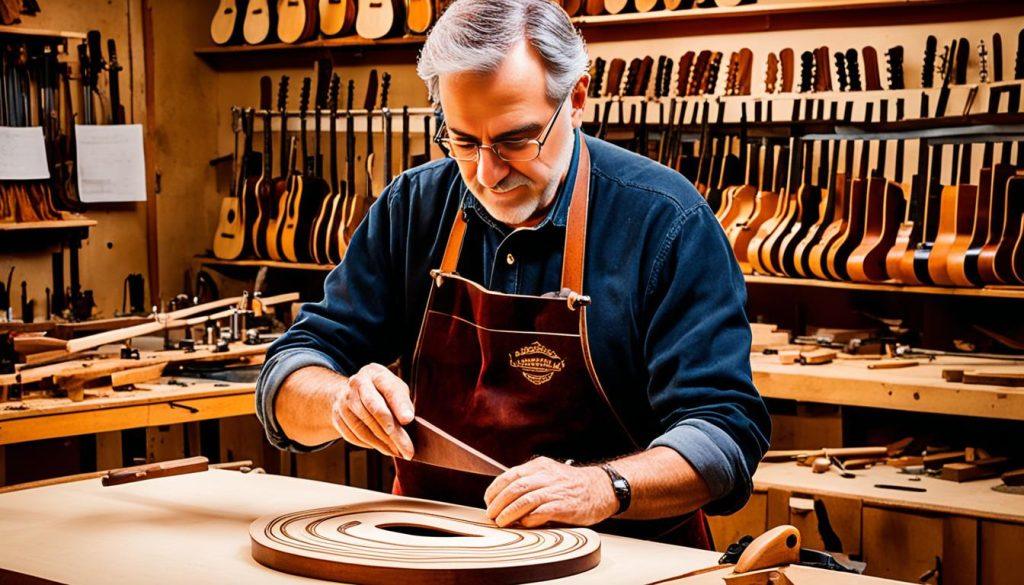
Birth of the Steel-String Guitar
In the early 20th century, advancements in metal technology paved the way for the birth of the steel-string guitar. This innovative design revolutionized the world of guitars, bringing a brighter sound and greater versatility to the instrument.
The steel-string guitar featured a larger body and a narrower neck, providing players with enhanced playability and a more powerful tone. However, the most significant advancement was the use of metal strings, which produced a brighter and more vibrant sound compared to the traditional gut or nylon strings.
As the steel-string guitar gained popularity, it found a place in various genres of music, including folk, country, blues, and jazz. Its distinctive sound and increased volume made it well-suited for accompanying vocalists and playing lead melodies.
The adoption of the steel-string guitar in folk music, specifically in the folk revival of the mid-20th century, played a vital role in shaping the acoustic sound of the era. Artists like Bob Dylan, Joni Mitchell, and Woody Guthrie brought the steel-string guitar to the forefront of their storytelling and protest songs, capturing the hearts of audiences worldwide.
“The steel-string guitar’s bright sound and versatility allowed musicians to explore new musical territories and express themselves in unique ways.” – Guitar Magazine
The emergence of the steel-string guitar also had a significant impact on country music, contributing to the genre’s characteristic twang and adding a dynamic edge to rhythm and lead guitar playing. Its vibrant tone perfectly complemented the heartfelt lyrics and lively rhythms that define the genre.
The steel-string guitar’s influence extended to the blues, where its bold and resonant sound helped shape the expressive and soulful playing style of iconic blues artists. Its increased volume allowed blues musicians to captivate audiences with their powerful guitar solos and emotionally charged performances.
Furthermore, the steel-string guitar found its place in the world of jazz, enhancing the instrument’s ability to cut through the ensemble. Jazz guitarists like Django Reinhardt and Wes Montgomery utilized the steel-string guitar to create sophisticated and complex chord voicings, adding a bright and distinctive flavor to their improvisations.
With its advancements in metal technology and brighter sound, the steel-string guitar became a beloved instrument in various musical genres, enriching the sonic landscape and inspiring generations of musicians. Its adaptability and versatility continue to make it a staple in the world of music.
The Brighter Sound of the Steel-String Guitar
- Advancements in metal technology led to the birth of the steel-string guitar in the early 20th century.
- The steel-string guitar featured a larger body, a narrower neck, and metal strings that produced a brighter sound.
- It became popular in various genres such as folk, country, blues, and jazz.
- The steel-string guitar’s sound was well-suited for accompanying vocals, playing lead melodies, and cutting through ensembles.
Rise of the Electric Guitar
The invention of the electric guitar in the 1930s revolutionized music forever. Innovators like Les Paul and Leo Fender pioneered electric guitar designs incorporating pickups and amplification technology.
The electric guitar allowed for increased volume, sustain, and tonal versatility, laying the foundation for rock ‘n’ roll, blues, jazz, fusion, and countless other genres. With the electric guitar, musicians could explore new sonic possibilities and push the boundaries of their creativity.
“The electric guitar is the instrument that allows you to make statements, whether they’re musical, political, or otherwise. It’s a vehicle for expression and self-discovery,”
Les Paul, known as the “father of the electric guitar,” played a pivotal role in developing the solid-body electric guitar. His collaborations with Gibson resulted in the iconic Gibson Les Paul, which became one of the most popular electric guitar models in history. The Les Paul’s rich, warm tone and sustain made it a favorite among guitarists worldwide.
Leo Fender, founder of Fender Musical Instruments, introduced another groundbreaking electric guitar model – the Fender Telecaster. Its simple yet versatile design, featuring single-coil pickups and a solid-body construction, made it a staple in various genres.
Electronic pickups in electric guitars transformed the way sound was captured and amplified. By converting string vibrations into electrical signals, pickups allowed for clearer and louder sound reproduction. Musicians could now experiment with different techniques and effects, shaping the electric guitar’s unique character.
To further enhance their sound, electric guitarists used amplifiers that amplified the electrical signal sent from the guitar. The use of amplification technology not only increased the guitar’s volume but also allowed for tonal shaping through various controls and effects.
With the rise of the electric guitar, musicians embraced a new level of creativity, pushing the boundaries of what was possible with their instrument. The electric guitar became an icon, symbolizing rebellion, innovation, and artistic freedom.
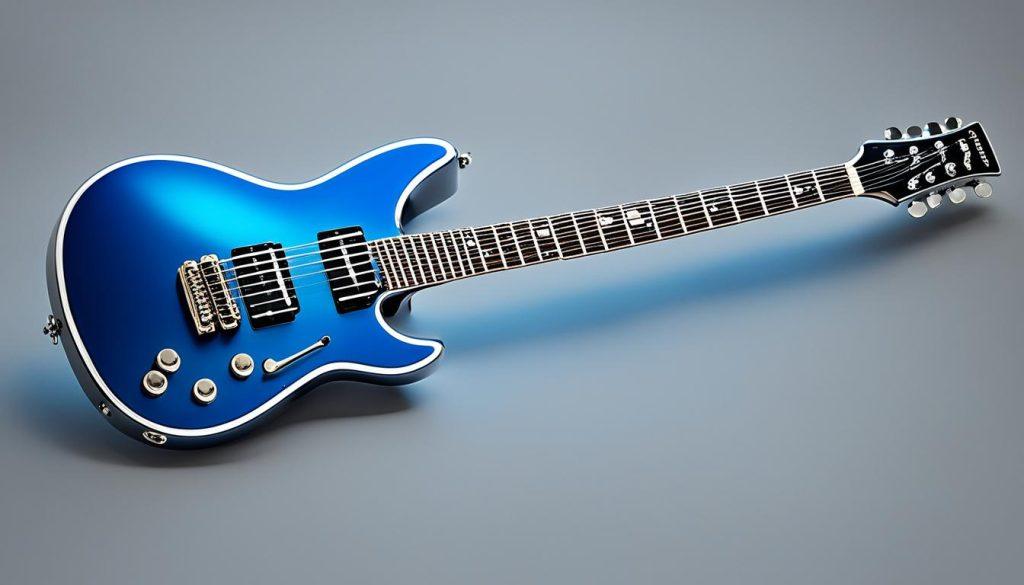
The Iconic Les Paul Electric Guitar
The Les Paul electric guitar, developed by Les Paul and Gibson, is known for its solid-body construction, rich tone, and sustain. It has been played by countless guitar legends, including Slash, Jimmy Page, and Joe Perry, cementing its status as one of the most iconic electric guitar models in the world.
Modern Innovations and Diverse Styles
The world of guitar playing has seen remarkable advancements, pushing the boundaries of what this iconic instrument can do. From traditional craftsmanship to digital innovations, the guitar continues to evolve and inspire musicians across a wide range of genres and styles. Let’s explore some of the exciting developments in the world of guitars.
Hybrid Digital Guitars: Blending Tradition and Technology
One of the most notable advancements in recent years is the emergence of hybrid digital guitars. These instruments combine the timeless craftsmanship of acoustic guitars with cutting-edge digital capabilities. Hybrid digital guitars offer a bridge between the past and the future, allowing musicians to explore new sonic possibilities while retaining the familiar feel and sound of a traditional guitar.
With built-in digital effects, wireless connectivity, and even programmable features, hybrid digital guitars open up a whole new world of creative potential. Musicians can experiment with different tones, textures, and sounds, expanding their sonic palette and taking their performances to new heights.
Diverse Playing Techniques: Fingerstyle, Flamenco, and Slide Guitar
Another aspect of guitar advancements lies in the exploration of diverse playing techniques. Fingerstyle, a technique that involves plucking the strings with individual fingers, allows for intricate melodies, harmonies, and basslines to be played simultaneously. This technique is commonly associated with genres such as folk, classical, and jazz.
Flamenco guitar, a rich and expressive style of playing originating from Spain, showcases the guitar’s versatility in producing percussive beats, rapid strumming, and soulful melodies. The rapid fingerpicking and complex rhythms of flamenco guitar create a powerful and captivating sound.
Slide guitar, on the other hand, involves using a slide (often made of glass or metal) to glide along the strings, producing a distinctive and haunting sound. This technique is commonly associated with blues, country, and rock music, adding a touch of soulful expression to any performance.
These diverse playing techniques allow musicians to explore different genres, express themselves in unique ways, and push the boundaries of what the guitar can achieve.
Pushing the Boundaries: Guitar Advancements
Advancements in guitar technology have also led to improved playability, tonal versatility, and overall performance. From innovative pickup systems that capture the natural resonance of an acoustic guitar to intuitive controls that allow for on-the-fly adjustments, guitar advancements have enhanced the overall experience for both performers and audiences alike.
Additionally, the use of different tonewoods, such as spruce, cedar, mahogany, and maple, has further expanded the tonal palette of the guitar. Each wood type lends its unique characteristics, from warm and mellow tones to bright and punchy sounds. This allows musicians to choose the perfect instrument that suits their playing style and musical preferences.
As the guitar continually evolves, it remains a symbol of creativity, versatility, and a timeless expression of the human spirit. Whether you’re a seasoned guitarist or just starting your musical journey, the guitar’s modern innovations and diverse playing styles offer endless possibilities for exploration and self-expression.
The Profound Impact of Guitars on World Music
The guitar has had a profound impact on world music, leaving an indelible mark on the music industry. Its influence extends beyond individual songs and genres, shaping cultural movements and inspiring generations of musicians.
From the melodic strumming of acoustic guitars to the electrifying riffs of electric guitars, this versatile instrument has become a driving force behind countless songs and musical styles. Whether it’s the soulful blues, the energetic rock ‘n’ roll, or the rhythmic flamenco, guitars have the power to evoke emotions and connect people through the universal language of music.

Songs and Genres
Throughout history, guitars have played a central role in the creation and development of various songs and genres. The acoustic guitar, with its warm and intimate sound, has been a staple in folk music, allowing for heartfelt storytelling and lyrics that resonate deeply with listeners. On the other hand, the electric guitar’s raw power and versatility have shaped the landscape of rock, pop, and countless other genres, driving the energy and intensity of iconic songs.
“The guitar has become a symbol of self-expression and rebellion in the music industry, giving artists a platform to share their stories and connect with audiences on a profound level.” – Legendary guitar player
Cultural Movements
Guitars have also been at the forefront of cultural movements throughout history. From the folk revival of the 1960s, where acoustic guitars became a symbol of protest and social change, to the rise of grunge in the 1990s, guitars have served as a catalyst for cultural shifts and collective expressions of identity.
Moreover, guitars have played an essential role in cultural traditions around the world, such as flamenco in Spain or country music in the United States. These genres not only represent a musical style but also embody the values, stories, and cultural heritage of their respective communities.
The Music Industry
Within the music industry, guitars have been instrumental in shaping trends and influencing the direction of popular music. From the iconic guitar solos that define classic rock anthems to the intricate fingerpicking patterns in acoustic ballads, guitars have captivated audiences and shaped the sound of generations.
- Guitars have influenced the careers of legendary musicians, propelling them to superstardom and becoming synonymous with their identities.
- They have driven the creation of innovative recording techniques and production methods, pushing the boundaries of what is possible in music.
- Legendary guitar brands like Gibson, Fender, and Martin have become synonymous with quality and craftsmanship, shaping the industry and inspiring generations of guitarists.
As the guitar continues to evolve alongside advancements in technology and musical styles, its impact on world music only grows stronger. From the stages of sold-out arenas to intimate living room performances, guitars remain at the heart of musical creation, connecting people and transcending cultural boundaries.
Origins and Early Evolution of the Acoustic Guitar
The acoustic guitar has a rich and intriguing history that can be traced back to its origins in ancient stringed instruments like the lute. These early predecessors laid the foundation for the development of the acoustic guitar as we know it today.
Spanish luthiers, including the renowned Antonio Torres, played a crucial role in shaping the modern design of the acoustic guitar. Their craftsmanship and innovation in guitar construction propelled the instrument forward, refining its tone and playability.
In the early 20th century, a significant breakthrough occurred with the emergence of steel-string guitars. These guitars introduced a brighter and more versatile sound, expanding the range of expressions and genres that the instrument could accommodate.
The combination of ancient origins, Spanish luthiers’ influence, and the addition of steel strings marks the early evolution of the acoustic guitar. This distinctive instrument would pave the way for its enduring popularity and serve as the foundation for countless musical creations.
Cultural Influence and Iconic Moments of the Acoustic Guitar
The acoustic guitar’s cultural influence spans across various cultural movements and iconic moments throughout history. One such pivotal period was the folk revival of the 1960s, where the acoustic guitar became a powerful symbol of protest and self-expression.
The folk revival was a movement characterized by its emphasis on traditional folk music, often associated with social and political activism. Musicians like Bob Dylan, Joan Baez, and Pete Seeger used the acoustic guitar to convey powerful messages that resonated with audiences and sparked change.
At protests and gatherings, the strumming of acoustic guitars could be heard, serving as a rallying call and unifying force for those who sought to challenge the status quo. The guitar’s portable nature allowed musicians to bring their music to the front lines, spreading their message far and wide.
“The acoustic guitar was more than a musical instrument; it was a tool for change.”
The acoustic guitar also found its home in intimate coffeehouse performances, where it became a staple of the emerging folk music scenes. Storytellers, troubadours, and spirited musicians would gather in these coffeehouses to share their songs and stories, creating an atmosphere of community and connection.
These coffeehouses provided a platform for artists to showcase their talent and connect with audiences on a personal and emotional level. The acoustic guitar’s warm and organic sound perfectly complemented the intimate and cozy setting, captivating listeners and creating lasting memories.
Throughout the years, the acoustic guitar has become an iconic instrument that represents authenticity, craftsmanship, and the power of storytelling. Its ubiquity in cultural movements, protests, and coffeehouse performances solidifies its position as a cherished and influential musical companion.
The acoustic guitar’s cultural influence:
- Symbol of protest and self-expression during the folk revival
- Instrument of change and social activism
- Rallying call at protests and gatherings
- Companion for storytellers and troubadours in coffeehouse performances
- Representation of authenticity and connection
As we explore the history and evolution of the guitar, it becomes evident that the acoustic guitar’s cultural influence has shaped the way we perceive and appreciate music. Its ability to evoke emotions, inspire change, and create intimate connections with audiences has made it an enduring symbol of expression and artistry.
Innovation and Modern Advancements in the Acoustic Guitar
As technology advanced, so did the acoustic guitar. Innovations such as pickups for amplified performances and the use of high-quality tonewoods have pushed the boundaries of craftsmanship. These advancements not only enhance the sound projection and tonal quality of the instrument but also provide musicians with greater control over their sound. By incorporating pickups, acoustic guitars can now be easily amplified, allowing for performances in larger venues without compromising the natural acoustic tone.
The choice of tonewoods is essential in crafting acoustic guitars that produce rich, resonant sounds. Luthiers meticulously select tonewoods, such as spruce, cedar, mahogany, and rosewood, based on their unique acoustic properties. These tonewoods are carefully matched to create the perfect balance of warmth, brightness, and resonance, resulting in an instrument that responds to the player’s touch and produces a distinctive tone.
“Craftsmanship plays a pivotal role in the development of acoustic guitars. Every detail, from the bracing pattern to the body shape, is meticulously designed and executed by skilled artisans.”
Craftsmanship plays a pivotal role in the development of acoustic guitars. Every detail, from the bracing pattern to the body shape, is meticulously designed and executed by skilled artisans. The constant pursuit of perfection in craftsmanship ensures that each acoustic guitar is a unique masterpiece with its own personality and character. By incorporating traditional techniques and embracing modern innovations, luthiers continuously push the boundaries of guitar design and construction.
The Future of Acoustic Guitars
Looking ahead, the future of acoustic guitars is filled with endless possibilities. Advancements in technology and material science will continue to shape the evolution of acoustic guitars. Forward-thinking luthiers and manufacturers are exploring alternative materials, such as carbon fiber, to create guitars that offer unparalleled durability and stability while maintaining exceptional tone and playability.
Additionally, the integration of digital features and smart technology holds immense potential for acoustic guitars. Hybrid digital guitars, equipped with built-in effects and connectivity options, allow musicians to unlock a new realm of creativity and interactive performance.
As the acoustic guitar continues to evolve, one thing remains certain: its timeless appeal and ability to captivate musicians and audiences alike. Whether strumming gentle folk melodies or virtuosic fingerstyle arrangements, acoustic guitars have cemented their place as a fundamental instrument in virtually every musical genre.
JamPlay: Bridging Tradition and Innovation in Guitar Education
Whether you’re a beginner starting your musical journey or an experienced guitarist looking to enhance your skills, JamPlay is the ultimate destination for comprehensive guitar education. Combining tradition and innovation, JamPlay offers a wide range of lessons and courses taught by expert instructors, ensuring a dynamic and interactive learning experience.
At JamPlay, you’ll find a diverse curriculum that covers everything from basic chords to advanced fingerstyle techniques. Our expert instructors are passionate about sharing their knowledge and helping students achieve their musical goals, making learning guitar a rewarding and enjoyable experience.
What sets JamPlay apart is our commitment to interactive learning. With features like video lessons and interactive tabs, our platform allows you to learn at your own pace and practice with real-time feedback. Whether you prefer visual demonstrations or hands-on exercises, JamPlay provides the tools you need to excel in your guitar journey.
“JamPlay has transformed my guitar playing. The comprehensive lessons and expert instructors have helped me progress from a novice to a confident guitarist. The interactive learning features have made practicing enjoyable and effective. I highly recommend JamPlay to anyone looking to learn guitar.”
From classical to rock, blues to jazz, JamPlay caters to a diverse range of genres. Explore your favorite styles and discover new ones along the way. With our comprehensive curriculum, you’ll have access to lessons that cover a wide variety of musical genres, ensuring a well-rounded and versatile skill set.
Join the JamPlay community today and experience the best in guitar education. Start your musical journey, learn from expert instructors, and unleash your creative potential. Whether you aspire to play in a band, write songs, or simply enjoy playing for yourself, JamPlay is here to support and inspire you every step of the way.
Unlock your guitar-playing potential with JamPlay’s comprehensive lessons, expert instructors, and interactive learning platform. Explore the diverse genres, embrace the rich tradition of the guitar, and embark on a musical adventure like no other. Join JamPlay today and let your creativity soar!
Conclusion: The Timeless Legacy of the Guitar
The guitar stands as a timeless instrument that has shaped the landscape of music for centuries. From its ancient origins to its modern innovations, the guitar’s legacy is deeply rooted in the universal language of music. Its rich and fascinating history spans thousands of years, captivating musicians and audiences alike with its versatility and expressive capabilities.
Learning the guitar is not just about mastering chords and strumming patterns; it is a rewarding and fulfilling experience that allows individuals to express their creativity and connect with others on a profound level. The guitar’s ability to transcend language barriers and cultural boundaries makes it a truly universal instrument, capable of conveying emotions and telling stories that resonate with people from all walks of life.
Whether it’s the soulful melodies of the blues, the intricate fingerpicking of folk music, or the electrifying solos of rock ‘n’ roll, the guitar has left an indelible mark in every genre and era. Its timeless appeal continues to inspire and shape the music industry, pushing boundaries and setting new standards.
As we reflect on the guitar’s legacy, we recognize the instrument’s enduring impact on the world of music. From ancient civilizations to the present day, the guitar remains an iconic symbol of artistic expression and a beloved companion for countless musicians. Its ability to transcend time and connect people through the universal language of music solidifies its position as one of humanity’s greatest cultural treasures.
Source Links
- https://www.britannica.com/art/guitar
- https://furtadosschoolofmusic.com/blog/the-resonant-strings-tracing-the-history-of-the-guitar-instrument/
- https://blog.jamplay.com/strumming-through-time-the-resonant-history-of-the-acoustic-guitar/
This post may contain affiliate links. As an Amazon associate, Google associate as well as associate for other programs, Guitar & Music Institute may earn commissions from qualifying purchases.



